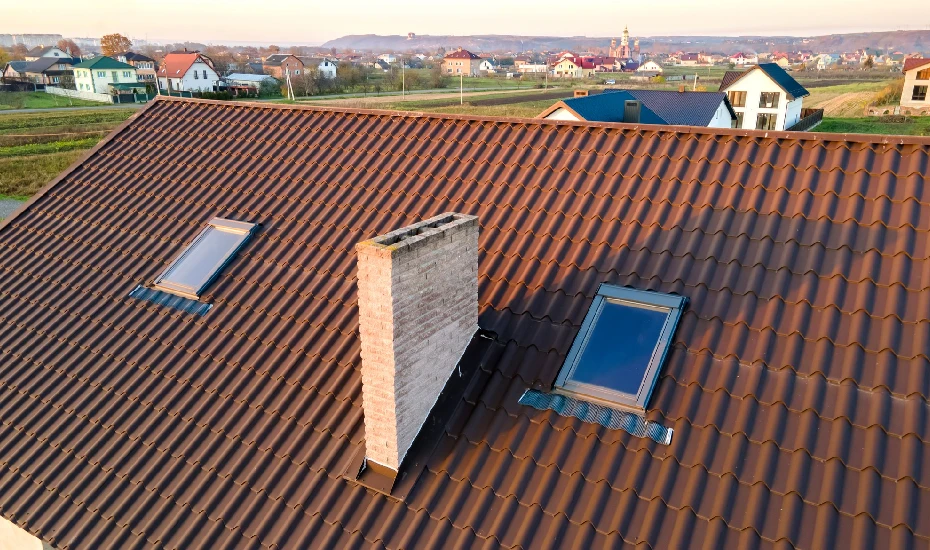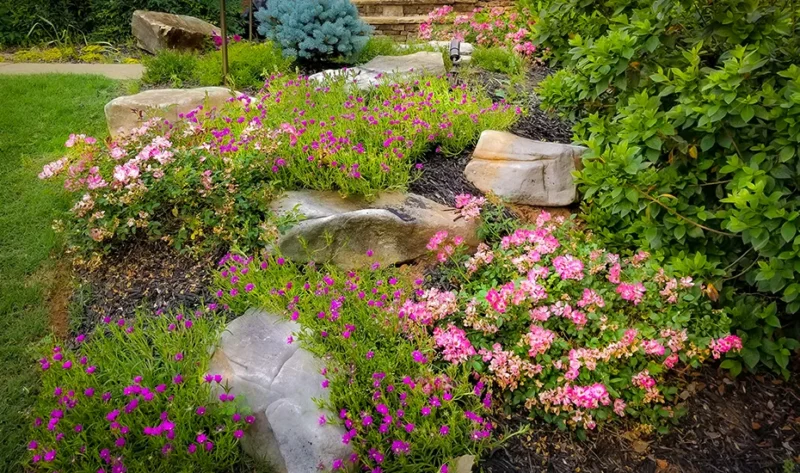Homeowners have a lot of maintenance tasks to manage, from taking care of their lawn to fixing leaky faucets. With the hustle and bustle of everyday life, some of these tasks can easily get pushed aside or forgotten. Your roof, in particular, is one of those areas that often gets overlooked. It’s up there, out of sight, and most of the time, you don’t give it a second thought—until something goes wrong.
Many people assume that if their roof isn’t leaking or visibly damaged, everything’s fine. However, your roof takes a beating from weather, temperature changes, and time itself. Over time, even small issues can turn into larger, more expensive problems.
But if you want to ensure your roof stays in top condition and avoid unexpected repair costs, it’s crucial to take proactive steps. Want to know how? Check out our blog below for a comprehensive roof repair checklist that can help you protect your home and wallet!
1. Inspect Your Roof Regularly
The first step in preventing roof damage is regular inspections. Ideally, you should inspect your roof twice a year—once in the spring and once in the fall. These inspections help you catch small problems before they become big headaches.
During your inspection, look for signs like:
- Missing or damaged shingles: These are easy entry points for water.
- Sagging areas: This may indicate structural damage.
- Cracked or worn flashing: Flashing protects the seams where your roof meets chimneys, skylights, and vents. Damaged flashing can lead to leaks.
You can conduct a basic visual inspection yourself from the ground using binoculars, but for a more thorough look, consider hiring a professional to climb onto the roof for a closer inspection.

2. Check for Leaks and Water Damage
One of the biggest concerns when it comes to roofs is water damage. Water can seep through tiny cracks or damaged shingles, eventually causing mold, mildew, and even structural damage inside your home.
Inside your home, inspect your attic and ceilings for signs of:
- Water stains or discoloration: Brownish stains can be a sign of a roof leak.
- Musty smells: This can indicate mold caused by water damage.
- Damp insulation: If your attic insulation is damp, your roof could be leaking.
It’s important to address leaks as soon as you spot them to avoid further damage.

3. Clear Your Gutters
Your gutters play a crucial role in keeping your roof healthy. They direct rainwater away from your roof and home’s foundation. However, clogged gutters can cause water to pool on your roof, leading to leaks and water damage.
Make sure to:
- Clean your gutters regularly: Clear out leaves, debris, and other blockages.
- Inspect for sagging or damage: Damaged gutters won’t drain water properly, causing problems for your roof.
Keeping your gutters clean and in good condition will save you from unnecessary roof repairs down the road.
4. Look for Moss and Algae Growth
While moss and algae may seem harmless, they can actually damage your roof over time. Moss retains moisture, which can cause your shingles to deteriorate and rot. Algae, on the other hand, can make your roof look unsightly and cause dark streaks across your shingles.
If you spot moss or algae on your roof:
- Gently remove it: Use a soft brush or broom to sweep away moss.
- Avoid pressure washing: High-pressure washing can damage your shingles and loosen granules.
- Consider zinc or copper strips: These can help prevent moss and algae growth in the future.
By keeping your roof free of moss and algae, you can extend its lifespan and maintain its appearance.

5. Check Your Attic Ventilation
Proper attic ventilation is essential for maintaining your roof’s health. Poor ventilation can lead to moisture buildup, which can cause mold, mildew, and rot. It can also cause your roof to overheat, which can prematurely age your shingles.
To ensure your attic is properly ventilated:
- Look for signs of poor ventilation: This includes excessive heat in the attic, a musty smell, or visible mold growth.
- Check your soffit vents: These vents allow cool air to enter your attic and warm air to escape. Make sure they’re not blocked by insulation or debris.
- Ensure there’s enough airflow: If your attic feels stuffy, you may need additional ventilation.
Keeping your attic well-ventilated will help prevent damage to your roof and improve your home’s energy efficiency.

6. Trim Overhanging Branches
Trees provide shade and add beauty to your property, but overhanging branches can cause serious damage to your roof. During storms, branches can break and fall on your roof, causing damage to shingles and gutters.
To protect your roof:
- Trim back branches: Keep tree limbs at least six feet away from your roof.
- Watch for falling debris: In addition to branches, leaves, and twigs can accumulate on your roof and in your gutters, leading to clogs and water damage.
By trimming overhanging branches, you can reduce the risk of damage and keep your roof in good condition.

7. Replace Damaged Shingles
If you notice any cracked, curled, or missing shingles during your inspection, it’s important to replace them as soon as possible. Damaged shingles allow water to penetrate your roof, which can lead to leaks, rot, and other structural issues.
To replace damaged shingles:
- Remove the old shingle: Use a pry bar to lift the damaged shingle and pull out the nails.
- Install the new shingle: Slide the new shingle into place and secure it with nails.
- Seal the edges: Apply roofing cement to the edges of the new shingle to ensure a watertight seal.
By replacing damaged shingles promptly, you can prevent further damage and extend the life of your roof.

8. Inspect and Repair Flashing
Flashing is the metal material installed around roof penetrations like chimneys, skylights, and vents. It’s designed to prevent water from entering these areas, but over time, flashing can crack, rust, or become loose.
To inspect your flashing:
- Look for rust, cracks, or gaps: Damaged flashing can allow water to seep in and cause leaks.
- Reseal or replace flashing as needed: If your flashing is in poor condition, it’s best to have a professional repair or replace it.
Properly maintained flashing is crucial for preventing leaks and protecting your roof.

9. Prepare for Winter Weather
If you live in an area with cold winters, your roof faces additional challenges like ice dams, snow buildup, and freezing temperatures. To prepare your roof for winter weather, take the following steps:
- Inspect and clean gutters: Ensure your gutters are free of debris to prevent ice dams.
- Install heat cables: These cables can help melt snow and ice, preventing them from accumulating on your roof.
- Check for loose shingles or flashing: Winter weather can exacerbate existing roof damage, so it’s important to repair any issues before the snow starts falling.
By preparing your roof for winter, you can avoid costly damage and ensure your home stays warm and dry.

10. Hire a Professional for Major Repairs
While some minor roof repairs can be tackled by handy homeowners, larger issues should always be left to the professionals. Roof repairs can be dangerous, and improper repairs can lead to further damage or void your roof’s warranty.
When hiring a professional roofing contractor:
- Do your research: Look for a licensed, insured contractor with positive reviews.
- Get multiple estimates: Compare quotes from different contractors to ensure you’re getting a fair price.
- Ask about warranties: A reputable contractor will offer a warranty on their work.
Hiring a professional ensures that your roof is repaired correctly and safely.
11. Plan for Future Maintenance
Your roof is a long-term investment, and proper maintenance is key to extending its lifespan. In addition to regular inspections and repairs, you should create a maintenance plan to keep your roof in good condition for years to come.
Your maintenance plan should include:
- Annual inspections: Schedule professional inspections at least once a year to catch potential issues early.
- Seasonal cleaning: Keep your gutters, roof, and attic free of debris to prevent water damage and mold growth.
- Roof upgrades: If your roof is aging, consider upgrading to more durable materials or improving ventilation to prevent future problems.
By planning ahead and staying on top of maintenance, you can ensure your roof continues to protect your home for years to come.

Conclusion
Taking care of your roof may not be the most glamorous part of homeownership, but it’s one of the most important. By following this roof repair checklist and staying proactive about maintenance, you can protect your home from costly repairs and ensure your roof lasts for years. Regular inspections, timely repairs, and professional help when needed will keep your roof in great shape, giving you peace of mind and a safe, dry home.



























